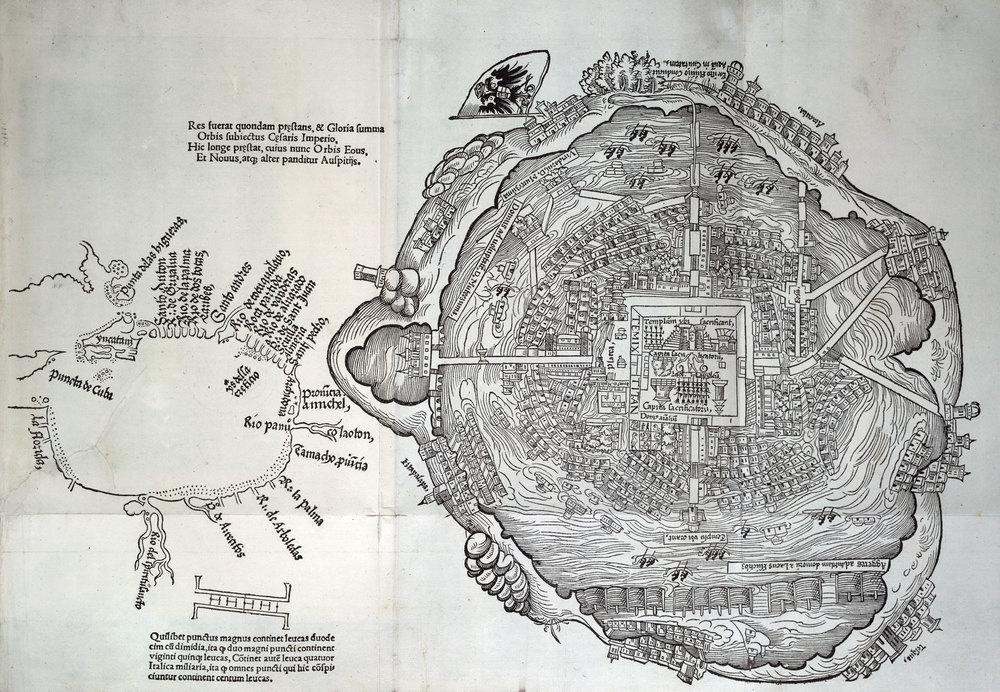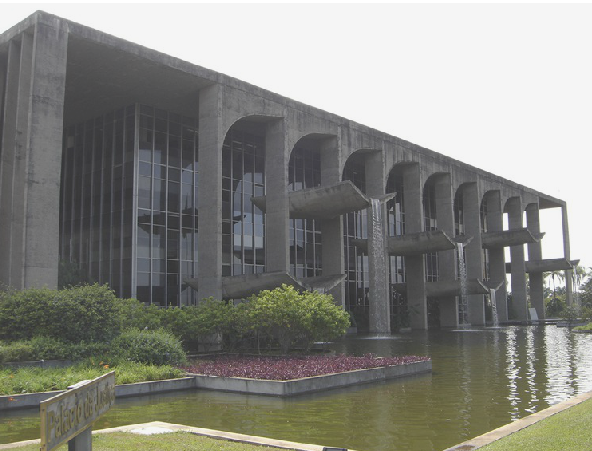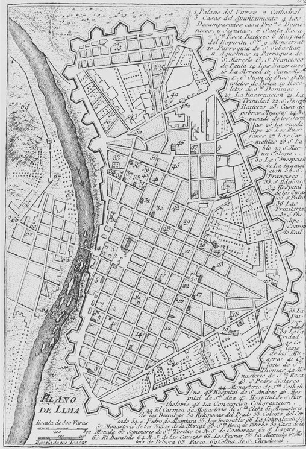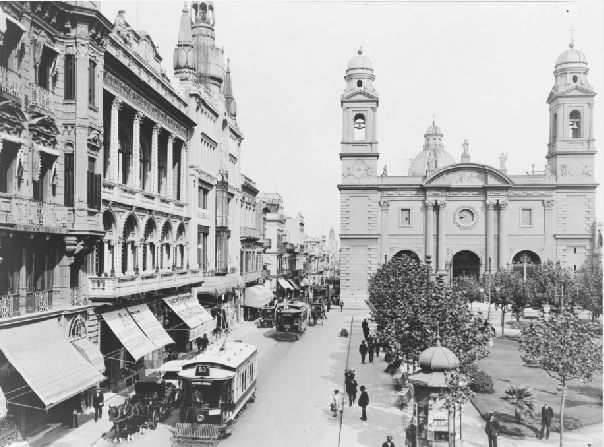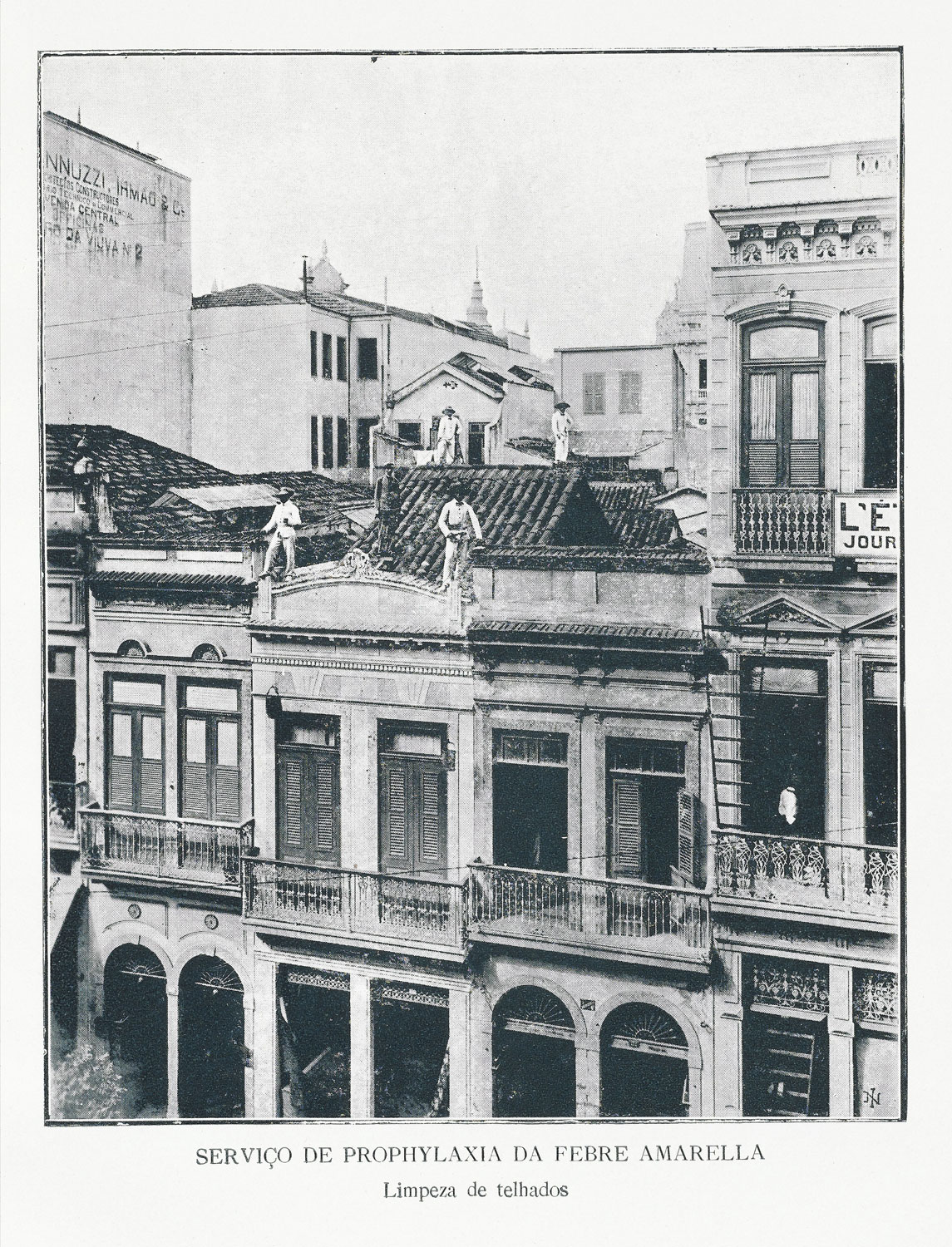Latin America is one of the most urbanized regions in the world. By 1990, over one-third of the area's population lived in forty-one cities of one million or more people each and, on average, the metropolises in Latin America are the largest on earth. Whereas the mean population for large cities in the U.S. and Canada is about 2.7 million, Latin American urban centers average about 3.6 million. Four of the world's fifteen largest cities are in Latin America, including two--Mexico City and Sao Paulo--that are among the world's five most populous urban centers. Despite U.S. stereotypes that characterize Latin America as a backwards rural region, major cities play a massive role in these countries' societies, economies, and cultures.
These cities, though, would be nothing without science. All Latin American (and world) cities, from ancient times to the present, have relied on a great variety of technologies and applied sciences that have shaped the cities and allowed them to function. Furthermore, cities provide a space for the educational and research centers that create and promulgate the techniques needed to build and operate a city.
Some areas of Latin America, especially Mesoamerica and the Andes, had very advanced cities long before the arrival of Iberian conquerors. Early cities in Mexico like Teotihuacan (seen in the Observatories topic) bear witness to the feats of the Amerindian engineers and cosmographers who built its giant pyramids and oriented them with the firmament. The Inca city Cuzco and the Aztec capital Tenochtitlan (seen in the sources) were (c. 1500) among best designed and well operated urban centers anywhere on earth. These clean, beautiful, and sanitary cities made the most of their environs through creative engineering while, by virtue of their size and grandeur, acting as visible manifestations of real political power.
The Spanish conquerors quite literally replaced indigenous urban centers with their own landscapes of power, religion, and "civilization." New Spanish cities were built directly on top of Indian ones and pre-Columbian temples and sacred places were replaced by grandiose Christian cathedrals. Churches, viceregal courts, and standardized grid layout (see the source on Lima) were meant to embody the supposed superiority of European culture and make it clear that the landscape itself was now dominated by whites.
In the years following independence, progressive reformers focused many of their efforts on cities, both because urban centers were central to industrialization and commerce and also because they were sites meant to embody the image of greatness and modernity to which the new nation-states aspired. Around 1900, urban modernization was in full swing: new technologies like streetcars and telephones made cities more integrated, public health officials worked to defeat the deadliest epidemics, and advancements in sewers and waterworks made cities cleaner and healthier. Concurrently, criminologists and other social scientists tried to impose the same sort of order and progress in human society as engineers applied to new downtown buildings.
This elite, top-down, and (ideally) scientific vision of progress was not, however, shared by all urbanites. As Teresa A. Meade, Anton Rosenthal, and other historians have pointed out, the benefits of progress were not shared (or even desired) by everyone in a city. Improvements in sanitation, for example, were generally applied to wealthy downtown areas while the impoverished suburbs that suffered most from poor living conditions were often neglected by their governments. New communication and transportation technologies generally serviced only the wealthier parts of town, a circumstance that made poor areas even more peripheral to a city's commercial life. Such unequal distribution of modern amenities and the contrast between elite and non-elite visions of progress led directly to several strikes and riots that targeted the very edifices of modernity that were made by a for elites (Meade 1997; Rosenthal 1995).
In more recent years, Latin America's metropolises have developed several common problems, some of which are local while others are global. The massive increase in urban population caused by foreign immigration (largely from southern Europe) and rural to urban population movements within the region have led to mass urban poverty, especially in the suburbs. Latin American governments simply do not have the resources to extend urban infrastructures (clean water, sewers, electricity, etc.) to these constantly growing slums, thus they develop "informally" from the bottom up (Agnotti 1996; Manigat 1997). See the source on Port-au-Prince for an extreme example of this phenomenon. From an ecological standpoint, the struggle to modernize Latin America's cities has been devastating. Factories (often placed dangerously close to residential areas) pollute the air, raw sewage befouls the rivers, and complex river eco-systems (especially that of the amazon basin) are destroyed to provide electricity to the ever-growing urban centers. Although Latin America is far from the worst polluting region on earth, the long term effects on the environment--and short term impact on human health--could be terrible.
Although there is not sufficient space in this topic to discuss all the different aspects of science in Latin America's cities, attention is drawn to the major achievements, shortcomings, and conflicts within this field. The fact that over one-third of the region's population is directly impacted by how science, technology, and public health are applied in the region's metropolises underscores just how important urban science is to the people and nations of Latin America.
Questions for further exploration:
- How have new technologies changed the way urban Latin Americans "experience" their cities? The Montevideo streetcars in this topics sources is one example, but try to include other important new technologies from other cities.
- How has healthcare shaped Latin American cities and affected the people within them? Consider such things as public sanitation, advances in medicine, notions of "tropical medicine," public and private institutions, and who practices and receives certain kinds of medical care.
- Aside from the various forms of science within a city, a city itself--seen as a whole--embodies a coherent scientific work. Consider any one city (ancient, colonial, or modern) and explore some of the meanings that it had for people within and around it. Some potential foci include the city as a visible center of power, city as center of modernity, city as source of wonder, city as economic center, and city as social ideal. Think broadly and be creative in your responses.
- Look at how various urban sciences reflect (or affect) the crucial social divisions of race, gender, or class. Focus on only one of these social constructs, but you may incorporate as many cities and sciences as necessary to prove your argument.
- Write a short history of science in one of Latin America's major cities, focusing on a few events or trends that you consider to be the most significant concerning science, public health, or social science. Why were these the most important?
Further reading:
Agostoni, Claudia. Monuments of Progress: Modernization and Public Health in Mexico City, 1876-1910. Boulder: University Press of Colorado, 2003.
Angotti, Thomas. "Latin American Urbanization and Planning: Inequality and Unsustainability in North and South." Latin American Perspectives. 23: 4, The "Urban Question" in Latin America (Autumn 1996): 12-34.
Bliss, Katherine Elaine. Compromised Positions: Prostitution, Public Health, and Gender Politics in Revolutionary Mexico. University Park, Pennsylvania: The Pennsylvania State University Press, 2001.
Cahill, David. "Financing Healthcare in the Viceroyalty of Peru: The Hospitals of Lima in the Late Colonial Period." The Americas. 52: 2 (October 1995): 123-154.
Davis, Diane E. Urban Leviathan: Mexico City in the Twentieth Century. Philadelphia: Temple University Press, 1994.
Higgins, James. Lima: A Cultural History. New York, Oxford University Press, 2005.
Gilbert, Alan. The Latin American City. London: Latin American Bureau, 1998.
Griffin, Ernst and Larry Ford. "A Model of Latin American City Structure." Geographical Review. 70: 4 (October 1980): 397-422.
Guillen, Mauro F. "Modernism without Modernity: The Rise of Modernist Architecture in Mexico, Brazil, and Argentina, 1890-1940." Latin American Research Review. 39: 2 (2004): 6-34.
Koontz, Rex, Kathryn Reese-Taylor, and Annabeth Headrick. Landscape and Power in Ancient Mesoamerica. Boulder, CO: Westview Press, 2001.
Meade, Teresa A. "Civilizing" Rio: Reform and Resistance in a Brazilian City, 1889-1930. University Park, Pennsylvania: The Pennsylvania State University Press, 1997.
Pezzoli, Keith. Human Settlements and Planning for Ecological Sustainability: The Case of Mexico City. Cambridge: The MIT Press, 1998.
Portes, Alejandro, Carlos Dore-Cabral, and Patricia Landoldt, editors. The Urban Caribbean: Transition to the New Global Economy. Baltimore: The Johns Hopkins University Press, 1997.
Rosenthal, Anton. "The Arrival of the Electric Streetcar and the Conflict over Progress in Early Twentieth-Century Montevideo." Journal of Latin American Studies. 27: 2 (May 1995): 319-341.
